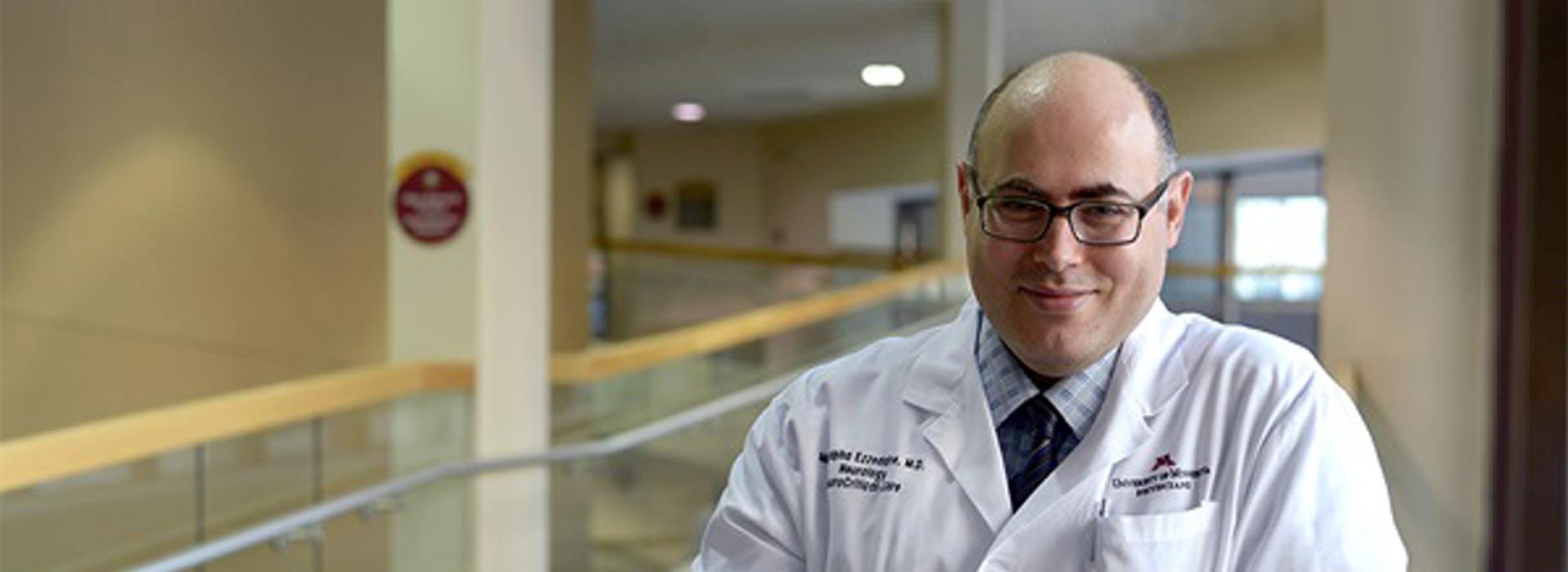
University of Minnesota Medical School Researchers Provide Long-Awaited Answers to Debate on Blood Sugar Control After Stroke
MINNEAPOLIS, MN- May 14, 2019 – Hyperglycemia- when the blood glucose level is too high because the body isn't properly using or doesn't make the hormone insulin- is very common in patients with acute ischemic stroke and can lead to poor outcomes for patients. For years, doctors all over the world have debated whether intensive glucose management versus standard glucose control using insulin shots lead to better outcomes after stroke. Now, thanks in part to University of Minnesota Medical School researchers, a multisite clinical study is able to provide a clear answer to that question.
Primary results from the Stroke Hyperglycemia Insulin Network Effort (SHINE) study show that intensive glucose management did not improve functional outcomes at 90 days after stroke compared to standard glucose therapy. In addition, intense glucose therapy increased the risk of very low blood glucose (hypoglycemia) and required a higher level of care such as increased supervision from nursing staff, compared to standard treatment.
“We are in the middle of a diabetes epidemic in this country which is one of the most treatable causes of stroke and cardiovascular disease,” said University of Minnesota Physician neurologist Mustapha Ezzeddine, MD, Associate Professor of Neurology, Neurosurgery and Radiology with the University of Minnesota Medical School. “We expect this question- whether intensive glucose management is more effective than standard glucose control using insulin shots after stroke- to not only be relevant today but become even more so in the near future as we see more information presented with diagnosed and undiagnosed diabetes and stroke.”
The study’s findings were recently presented during the International Stroke Conference in Honolulu.
“The study has found that there is risk in being too aggressive. The question we are now trying to answer is, what is the appropriate range where that glucose level should be,” said University of Minnesota Health Neurologist and Neurointensivist Oladi Bentho, assistant professor in the Department of Neurology at the University of Minnesota Medical School
There are more than 800,000 strokes each year in the U.S. It is a leading cause of death and causes more serious long-term disabilities than any other disease in the country. For more information: www.stroke.nih.gov
This study was supported by the NINDS (NS069498).
About the University of Minnesota Medical School
The University of Minnesota Medical School is at the forefront of learning and discovery, transforming medical care and educating the next generation of physicians. Our graduates and faculty produce high-impact biomedical research and advance the practice of medicine. Visit med.umn.edu to learn how the University of Minnesota is innovating all aspects of medicine.
Contact: Krystle Barbour
kbarbour@umn.edu
612-626-2767